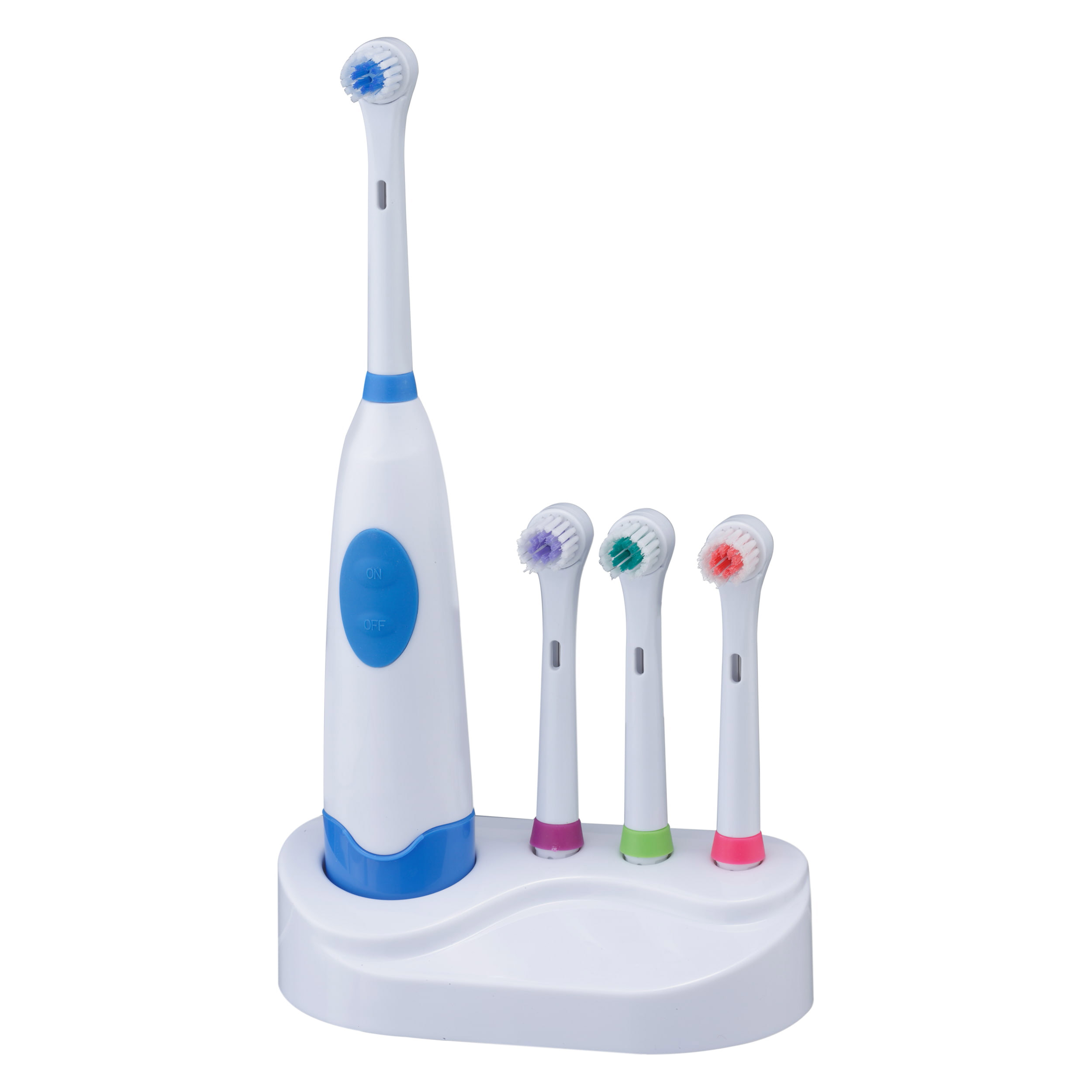Rotary electric toothbrushes, also known as oscillating-rotating toothbrushes, are known for their effectiveness in removing dental plaque when used correctly.
Rotating Bristle Action: Rotary toothbrushes typically have small, rounded bristle heads that rotate in a circular or back-and-forth motion. This motion helps dislodge plaque and food particles from the tooth surfaces and along the gumline.
Oscillating Movement: In addition to rotation, many rotary toothbrushes have an oscillating movement where the bristles move back and forth. This dual-action of rotation and oscillation increases the brushing effectiveness by reaching more areas of the teeth and gums.
High Brushing Speed: Rotary electric toothbrushes often have a high brushing speed, typically thousands of rotations or oscillations per minute. This rapid movement of the bristles enhances plaque removal by mechanically scrubbing the tooth surfaces.
Consistent Brushing Technique: These toothbrushes are designed to maintain a consistent and recommended brushing technique. Users simply need to guide the brush head across their teeth and gums, and the toothbrush does the rest. This consistency helps ensure thorough plaque removal.
Built-In Timers: Many rotary toothbrushes come with built-in timers that encourage users to brush for the recommended two minutes. This ensures that you spend enough time cleaning all areas of your mouth, including hard-to-reach places.
Pressure Sensors: Some models are equipped with pressure sensors that alert users when they're applying too much force while brushing. This helps prevent aggressive brushing, which can be harmful to both teeth and gums.
Customizable Brushing Modes: Many rotary electric toothbrushes offer different brushing modes, such as sensitive, whitening, and deep clean. These modes allow users to tailor their brushing experience to their specific needs, which can improve plaque removal in different situations.
